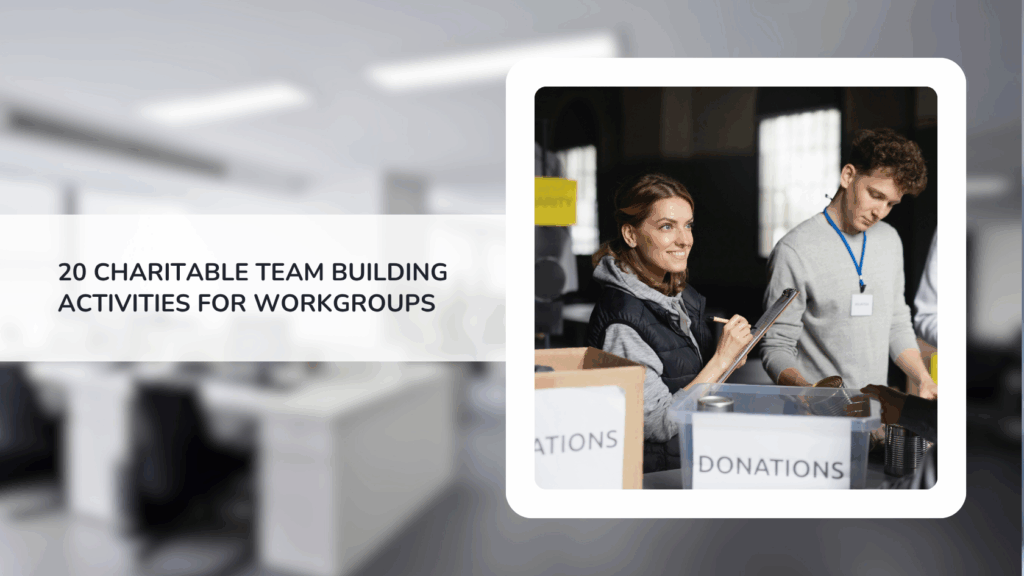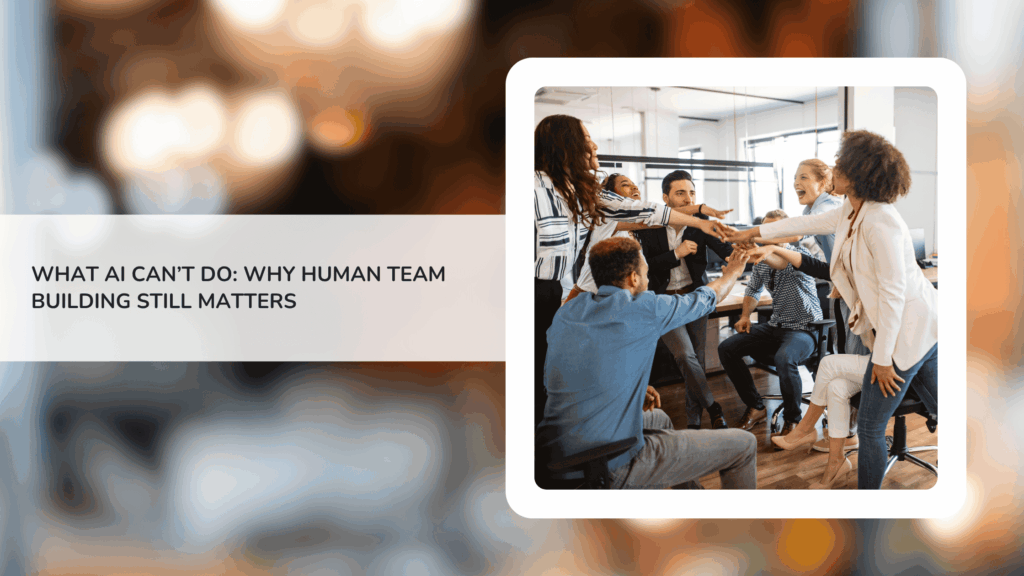Is your team looking for a behavioral analysis tool to help you work better together? Find out how DiSC can improve your group’s interpersonal relationships at the office.
Updated: July 7, 2025
Is your team looking for a way to collaborate better, communicate more clearly, and reduce misunderstandings at work? The DiSC model could be exactly what you need.
Whether you’re leading a team or simply working alongside colleagues with different styles, understanding DiSC can help you navigate workplace dynamics with more confidence and less frustration.
Here’s a practical look at what DiSC is, what it evaluates, and how you can use it to strengthen your team and your business.
What Exactly Is DiSC?
We know what you might be thinking:
“Great, another acronym for a complex topic.”
But that’s not actually the case here. DiSC is one of the most pivotal tools modern businesses can leverage when it comes to building stronger teams.
So, what exactly is DiSC?
In a nutshell, DiSC is a behavioral assessment that helps individuals identify their preferred ways of communicating and working. It’s based on the research of psychologist Dr. William Moulton Marston and groups people into four primary styles: Dominance, Influence, Steadiness, and Conscientiousness.
Unlike some personality tests, DiSC doesn’t lock people into fixed categories. It takes into account the fact that people are complex and multifaceted.
So, instead, it shows how you might naturally respond in different situations and how you can flex your style to connect more effectively with others.
Organizations use DiSC to help teams:
- Communicate more clearly
- Reduce misunderstandings and conflict
- Build trust and collaboration
- Leverage different strengths across the team
At Outback Team Building and Training, we’ve seen firsthand how DiSC can help people work better together and achieve stronger results. In fact, we’ve incorporated DiSC into our hiring process for years.
How Does the DiSC Assessment Work?
The DiSC assessment starts with a self-evaluation. You’ll answer questions about how you typically react to challenges, interact with others, and approach tasks.
Your responses reveal which DiSC style you lean toward most strongly. Many people show a clear preference for one style, while others display a blend of two or more. There’s no ideal result. Instead, the real value of DiSC lies in self-awareness and the ability to adapt your approach based on who you’re working with.
Knowing your own profile is only the first step.
But even more important is understanding what these styles mean, how other styles work, and how to use that knowledge to collaborate more effectively.
Breaking Down the Four DiSC Styles
You already know that DiSC is an acronym for four distinct work styles. Now, let’s dive a little bit deeper into each one of them.
Each DiSC style comes with unique strengths, potential challenges, and ways of interacting with others.
Here’s a closer look at what each style means and how it might show up in the workplace.
Dominance (D)
People with a Dominance style tend to be direct, decisive, and results-focused. They thrive on tackling challenges and value efficiency and action.
Others may see high-D individuals as confident and strong-willed, though sometimes blunt or impatient. For example, a D-style teammate might push a group to make decisions quickly, eager to keep momentum going.
Key traits often seen in Dominance types include:
- Taking action and moving projects forward
- Focusing on goals and outcomes
- Feeling comfortable navigating challenges
- Sometimes overlooking details or coming across as demanding
When working with Dominance types, it helps to be clear, concise, and focused on solutions. They appreciate straightforward communication, especially when discussing results and next steps.
Influence (I)
Those who lean toward the Influence style are enthusiastic, social, and people-oriented. They excel at building relationships and generating excitement around new ideas.
Colleagues often describe them as energetic and persuasive, though sometimes scattered or prone to losing focus. An I-style individual might rally the team with an impromptu brainstorming session but forget to capture follow-up actions.
Influence types typically bring these qualities to a team:
- Energizing group discussions and sparking new ideas
- Building team spirit and camaraderie
- Creating connections between people
- Occasionally struggling with details or follow-through
Working effectively with Influence types means engaging them in conversation, recognizing their contributions, and helping ensure plans stay organized and actionable.
Steadiness (S)
Steadiness types are patient, supportive, and committed to maintaining harmony within a team. They value cooperation, loyalty, and a stable work environment.
People often appreciate S-style colleagues for their reliability and calming presence, though they can be hesitant to embrace sudden change. For instance, an S-style person might prefer to mediate disagreements rather than address issues directly.
Typical strengths and challenges for Steadiness types include:
- Providing a steady, reliable presence
- Promoting collaboration and teamwork
- Remaining patient and diplomatic
- Sometimes resisting change or being slow to make decisions under pressure
When collaborating with Steadiness types, it’s important to give them time to adjust to new ideas, involve them in decisions, and express appreciation for their consistent support.
Conscientiousness (C)
Individuals high in Conscientiousness are analytical, precise, and focused on producing high-quality work. They thrive on data, logic, and thorough analysis.
Others may view C-style colleagues as diligent and detail-oriented, though sometimes critical or hesitant to delegate. A C-style teammate might spend significant time refining a report to ensure it’s error-free, even if deadlines are tight.
Conscientiousness types often demonstrate:
- High standards for accuracy and quality
- Strong problem-solving skills
- A preference for careful planning and logical approaches
- Occasional over-analysis or reluctance to make quick decisions
To collaborate well with Conscientiousness types, it helps to provide clear information, back up ideas with facts, and respect their need for thoroughness.
Why Does DiSC Matter in the Workplace?
Understanding DiSC goes beyond simply knowing your own style. It gives teams practical insights for working better together, reducing misunderstandings, and leveraging the diverse strengths each person brings.
Organizations that integrate DiSC into their culture often see improvements in communication, problem-solving, and employee morale. Managers, especially, find DiSC useful for tailoring feedback, delegating tasks effectively, and keeping teams motivated by recognizing what drives different personalities.
The big win ultimately is that DiSC helps people focus less on personality clashes and more on working together toward shared goals.
Putting DiSC Into Action in Your Organization
Once you know your team’s DiSC profiles, the key is applying those insights to daily interactions. Teams often use DiSC to:
- Adapt communication styles for clearer conversations
- Build balanced project teams with complementary strengths
- Anticipate and resolve potential conflicts before they escalate
- Coach team members to grow beyond their comfort zones
At Outback, we believe DiSC isn’t just a tool. It’s a practical way to unlock your team’s best performance and create a more positive workplace culture. That’s why we use it in our own business on a daily basis. Curious to learn how DiSC can help you build a more cohesive and high-performing team? We’d recommend exploring our Discovering Workstyles with DiSC program.
Want to learn more about how DiSC can help strengthen your team?
Get in touch with our Employee Engagement Consultants today to learn about Professional Development sessions that support stronger, more cohesive teams.



